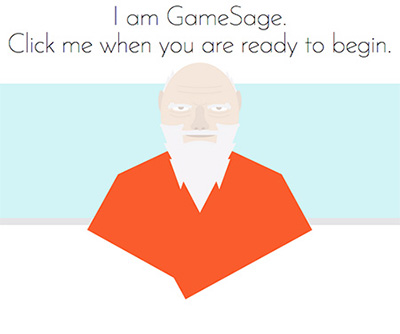
I’m happy to announce that UC Santa Cruz is currently searching for four jobs in areas of computational media (and we expect to announce two more soon). Two of the currently-advertised positions are in Engineering and two are in Arts. Read More

|
About EIS → |

I’m happy to announce that UC Santa Cruz is currently searching for four jobs in areas of computational media (and we expect to announce two more soon). Two of the currently-advertised positions are in Engineering and two are in Arts. Read More

Interested in working on innovative games, with passionate people, in an academic position in Silicon Valley?
We’re seeking a leader for the UC Santa Cruz professional MS in Games and Playable Media. The MS is offered through our Silicon Valley campus, now expanding into a new building (with about 5000 sq ft dedicated to the program) and in active planning to shift to a two year program.
The position will include working both with our current game faculty and with new personnel hired specifically for the program. The degree is focused on expanding the possibilities for games — and on helping students build the skills and connections they need for what they want to do next.
Application review begins July 17th, and much more information is in the official flier.

Video game playing is plagued by amnesia. One reason is that there are no good tools for finding related video games across time. Everything is focused on the present or future. Yet if you are fascinated by a certain game, the best next games to investigate are not necessarily the other ones featured in Amazon’s “bought together” display.
All that is about to change. Today UC Santa Cruz is introducing two new, free web tools that use natural language processing to help people find related games. One tool, GameNet, is a network of 12,000 games, connected based on their relatedness. GameNet doesn’t use a simple idea of relatedness, like genre, but rather one derived from analyzing the full text of the Wikipedia entries for these games. The other tool, GameSage, allows you to describe a hypothetical game (using any words you like) and find its location in GameNet — something no previous tool has provided. Read More
How can people embedded in large, for-profit companies find a way to direct some of the present expertise and resources to make a positive difference? In this talk from the Media Systems gathering, Donald Brinkman describes how he has worked to do this within Microsoft. In particular, he describes Microsoft’s role in enabling the digital projects engaging the AIDS Memorial Quilt that were also discussed in Anne Balsamo’s talk.
These projects explore the potential of digital memorials in an era when, as Balsamo references in Wendy Chun’s work, “we must be reminded that memory and storage are not the same thing.” Balsamo and collaborators began exploring the concept of creating a digital version of the quilt, allowing one to see and move across its massive surface, in 2001. With the emergence of national support for the digital humanities, a 2010 NEH Digital Humanities Startup Grant allowed them to begin work on the project — and led to an invitation to include their digital version in the physical display of the AIDS Quilt on the National Mall being organized by the NAMES Project Foundation for 2012. Read More
In an emerging, interdisciplinary area, how can those getting started understand the possible paths forward? One way is through looking at the (often wending) paths taken by pioneers. In this week’s Media Systems talk from Pamela Jennings (recently-appointed director of the Center for Design Innovation) she provides insight into how she became a field leader, as well as into the work she has done to help the nascent field find its way. Jennings has been a key figure in much of the field development of recent decades, including recent successes such as the NSF’s CreativeIT program and the founding of the SEAD network. (Some related reflections can be found in the Media Systems talks of Brenda Laurel and Janet Murray.)
Jennings also discusses her ongoing work as CEO of the startup company Noblewire. In particular, she describes the CONSTRUCTS Toolkit, a wireless sensor mesh network system for new mixed-reality (virtual and physical) applications in education, gaming, and design prototyping. Providing new hardware/software possibilities such as these can help in engaging diverse groups, spark new kinds of speculations, and make possible the construction of new demonstrations and prototypes that could lead to new insights and products. This in turn, is one strategy for creating the kinds of “digital sandboxes” that aid field building by providing opportunities for those from different disciplines to engage, communicate, collaborate, and play. Read More
I am happy to announce that we are publishing the final four videos from the Media Systems gathering — and that the final report, “Envisioning the Future of Computational Media,” is now available through print-on-demand!
We’re kicking off the last group with a talk from Ken Perlin, offering a vision of how computational media can become integrated throughout the curriculum, as something both written and read. Unlike most of our talks, this video focuses on the screen, where Perlin goes through a series of high-speed, interconnected demonstrations. He begins with a discussion of enabling believable interactive characters — arguing that a key is characters who can carry out intelligent performances of their roles, based on the kinds of high-level direction that can be provided by an AI system or by audience interaction (e.g., with a game controller). He shows two prototypes of characters like this, able to give engaging, coherent, grounded performances in real time. These simple characters arose from research deeply combining procedural computer graphics with the arts, particularly animation and puppetry (Perlin regularly collaborates with puppeteers). Read More